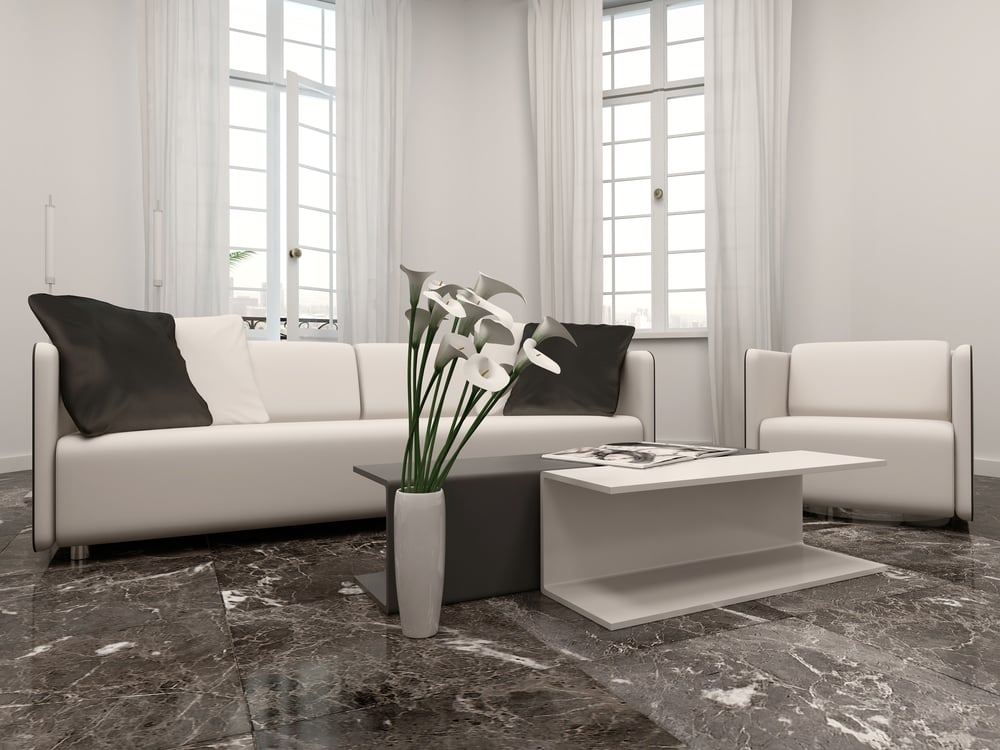Synthetic marble is a pocket-friendly and more durable alternative to natural marble. While natural marble is heat resistant and gives a lavish look, it quickly catches stains and is highly prone to discoloration. The non-porous nature of the artificial marble makes it easy to maintain.
- What is Natural Marble?
- How Synthetic Marble Gets Prepared?
- What are the Differences Between Synthetic Marble and Real Marble?
- Advantages and Disadvantages of Both Synthetic Marble and Real Marble
- Final Words
- FAQs
When it comes to living room interiors, several house owners turn towards marble simply because of how elegant a place looks after adding marble. Whether it’s an island modular kitchen marble top or a parallel modular kitchen, adding marble to your area can make your home look more aesthetically appealing.
Now that you know how marble can change the look of your house, it is time to know which marble to choose. What if we tell you that instead of buying natural marble, you can purchase synthetic marble, which will eventually last longer than natural marble? It would be best if you had a few questions regarding this artificial marble. Don’t worry; we’re here to answer all your questions. Here we will articulate some valuable tips that will help you choose between synthetic marble and natural marble.
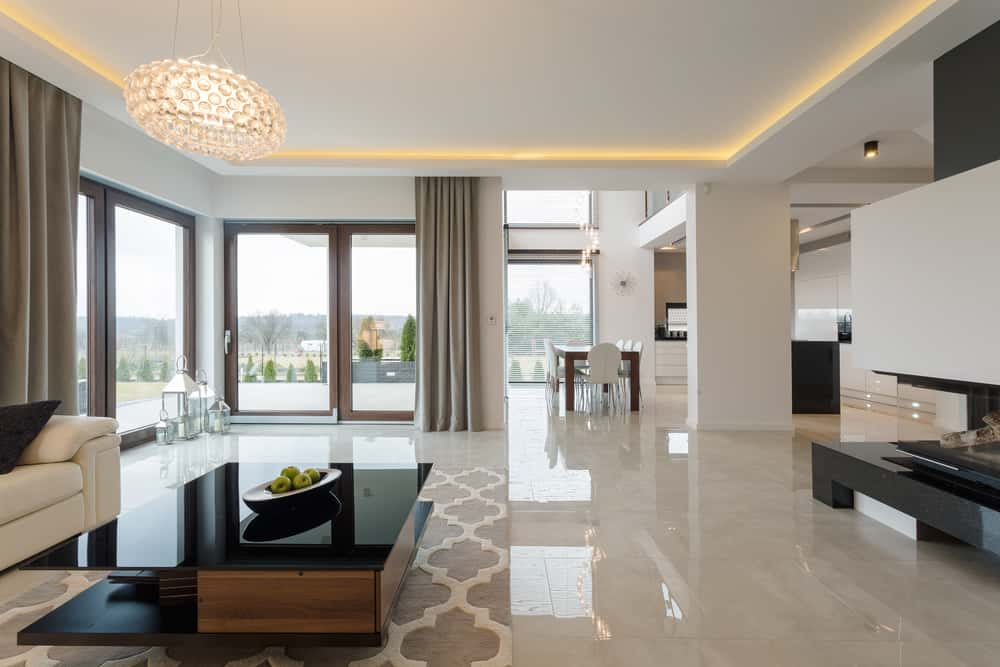
What is Natural Marble?
Calcium and magnesium, in association with carbon, form calcium carbonate and magnesium carbonate. The metamorphosis of both leads to the formation of natural marble in our surroundings. The transition keeps on happening over the years. The driving force behind this is excess pressure and heat in the environment. Besides that, even aqueous solutions can make the said carbonates form crystals. All the marble stones are a form of limestone. Some limestones are white, whereas other marble slabs have colour veins because of the minerals. When this complex rock-like structure comes into contact with acidic substances, we can observe the colour change. There is a high chance that natural marble will decay over time. Primarily real marble gets used in places like straight modular kitchen slabs, stairs, the lavatory, etc.
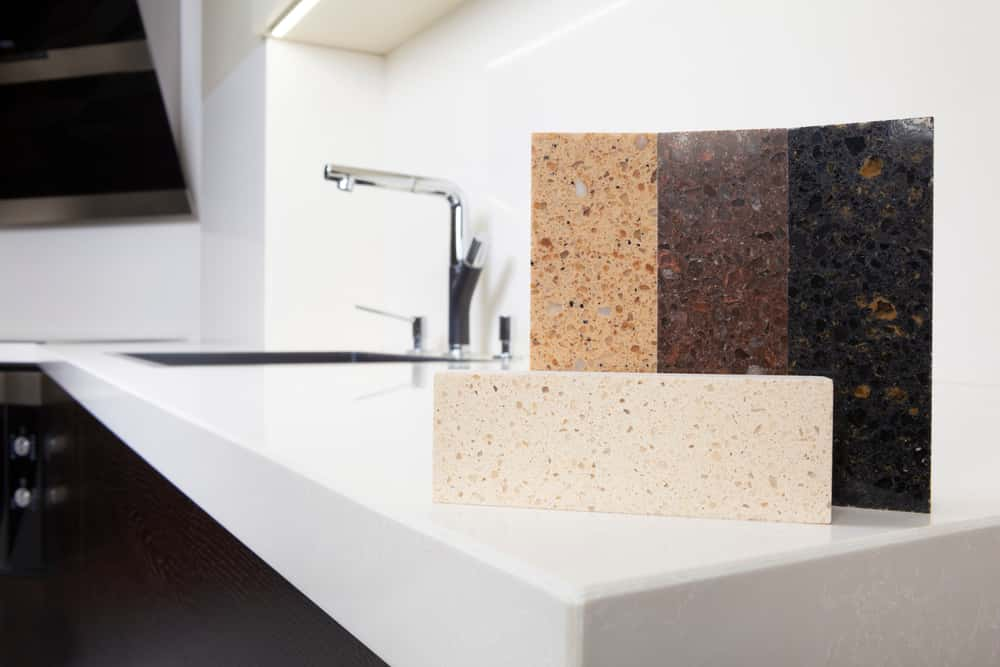
How Synthetic Marble Gets Prepared?
In the recent past, the popularity of artificial marble has increased exponentially. When you compare the geological activities of natural marble and synthetic marble, you can easily spot the difference in terms of geological activities. Artificial marble is one of those human creations that works perfectly as a substitute for natural marble. It gets formed due to the conglomeration of several elements, such as small pieces of marble, quartz sand, cement, stone powder, colophony, and acrylic glue. Mixing of all these elements takes place in a predetermined ratio. The mixture then gets stirred for a prolonged period in a vacuum space. After that, it needs to be kept under extensive pressure to solidify. After solidification, solid marble-like rocks will form from this mixture. The increase in demand for synthetic marble is because of the cost price of this artificially prepared marble. Usage of artificial marble can be primarily seen in u-shaped modular kitchen countertops, walls, and, last but not least, in making the floors of L-shaped modular kitchens.
What are the Differences Between Synthetic Marble and Real Marble?
We understand the daunting task you must face while choosing a suitable alternative between synthetic and natural marble. As we all know, selecting a suitable marble will change the entire look of the place. Your home will look more radiant with synthetic marble slabs for countertops. Without further delay, we present some differentiating factors between artificial and natural marble. It will eventually make you realise which is better for your house’s interior or exterior.
1. Innumerable Colour Patterns
Colours and patterns in a natural marble slab get formed due to impurities in the limestone. On the other hand, if you take synthetic marble, we can add colours artificially to it from the outside. The texture, grain, and shine natural marble has will remain absent in artificially formed marbles. Still, you will get the luxury of choosing from a diverse range of products in terms of colour patterns.
2. Required Maintenance
Natural marble finds it hard to withstand the test of time. Over time, natural marble will become fragile and tend to lose colour. Choose natural marble slabs instead of synthetic marble tiles in your house. It would be best if you got the deposition released every six months. Moreover, one should avoid spilling any acidic substances or oil over the marble as it can cause irreversible damage to the stone.
On the contrary, the non-porous nature of the artificial marble makes it easy to maintain.
The making process of synthetic marble makes it more compatible with regular house cleaning materials. It increases its resistance to any oils and stains.
3. Weight of Marble Slabs
Synthetic marble is comparatively easier to carry than natural marble as it is slimmer and lighter. This light weight makes the artificial marble slabs we will use in making synthetic marble kitchen countertops easy to carry from one place to another.
4. Difficulty in Finding Pair
The homogeneity of natural marble is lesser compared to synthetic marble. No two natural marble slabs look similar, and finding the same pair can sometimes be challenging. But when it comes to cultured marble, we can easily find you a couple of precisely similar-looking marble slabs due to the high homogeneity of this marble variant. A uniform pattern is present on both sides of the synthetic marble slabs, enhancing the areas of this type of marble implementation.
5. Heat Resistance Capability
Heat resistance is one characteristic feature where natural marble prevails over artificial marble. As one of the critical ingredients in artificial marble is glue, the chances of this glue melting are at their peak when it comes in contact with excessive heat or high temperature. When it comes to natural marbles, the immense heat and pressure in which artificial marbles get prepared to make them heat and pressure resistant.
6. Cost
Natural marbles need to be cut and polished before use. It is also not available in great abundance in nature. All these make it more expensive compared to artificial marble.
7. Installation Process of the Marble Slabs
Installing natural marble slabs is quite a difficult task to pull off, and it is only some people’s cup of tea. Skilled workers are required to do the needful. Installing it properly may lead to these marble slabs discoloured and cracks forming. When we talk about synthetic marble, installing it is almost a hassle-free process as they are not as brittle as natural marble.
Advantages and Disadvantages of Both Synthetic Marble and Real Marble
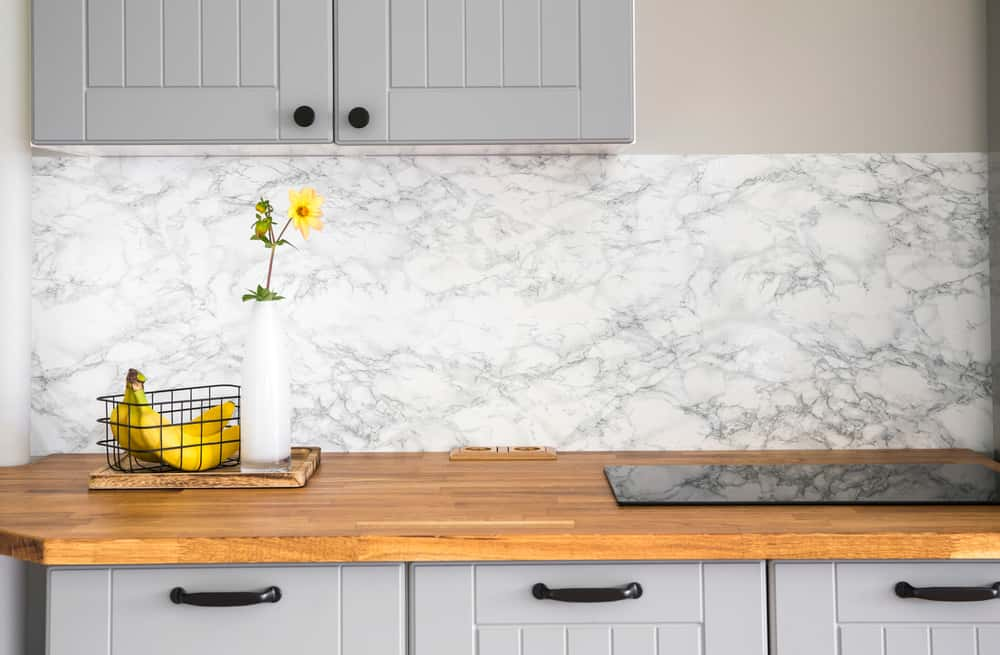
Now we will take a peek at the advantages and disadvantages of both these marble variants.
Natural Marble
● Advantages
-
It naturally formed from the limestone present in nature.
-
The sheer presence of marble makes the house look lavish.
-
Capable of withstanding high heat and pressure.
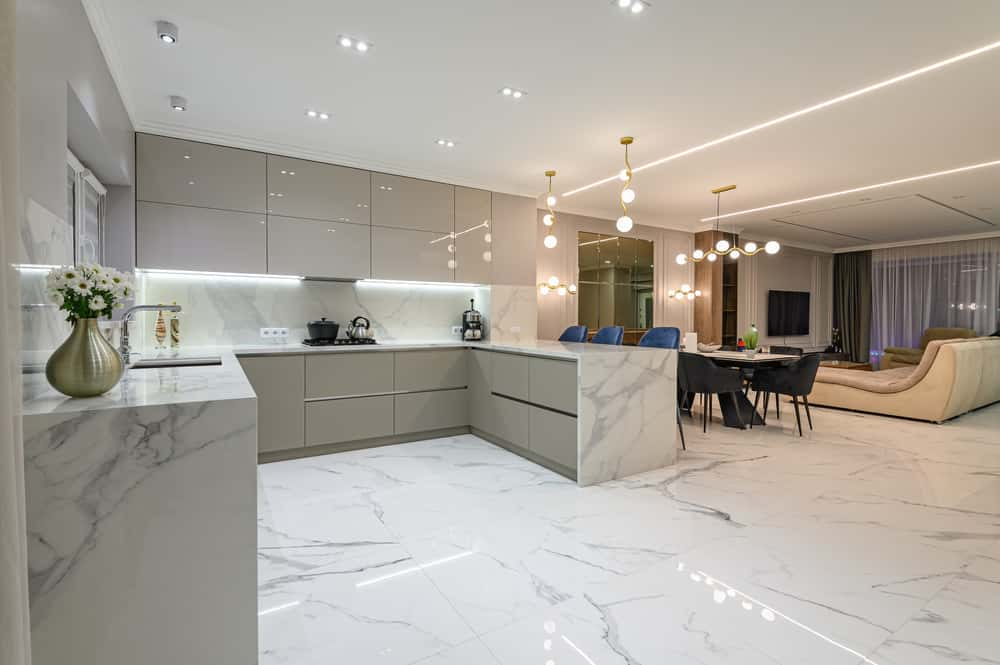
● Downsides
-
Highly expensive.
-
It quickly catches stains, and the chances of discolouration are high.
Synthetic Marble
● Advantages
-
Pocket-friendly alternative to natural marble.
-
Remodeling these natural marble slabs is more convenient, and they can get modified according to user preference.
-
More durable compared to natural marble.
● Disadvantages
-
It is incapable of withstanding heat due to the presence of glue in it.
-
It’s challenging to remove scratches from the upper surface of the synthetic marble.
Final Words
Several designers from across the world prefer marble for interior design. But when it comes to choosing, as we have mentioned earlier, the tide has shifted, and people nowadays prefer synthetic marble over natural marble. The primary reasons behind this preference change are cost, price, and the homogeneity of cultured marble. Now we leave the choice entirely up to you to decide what type of marble you want to install in your house. For further assistance, contact us at Homelane.com.
FAQs
1. What is synthetic marble called?
Synthetic marble, an alternative to natural marble, is also known as artificial marble or artificial granite. Some people also refer to it as a synthetic picture agate. Synthetic marble gets called by all these names as synthetic marble resembles all of the stones mentioned earlier. From texture to grain formation, natural marbles can be formed artificially in an artificial marble slab.
2. What is synthetic marble made of?
Several ingredients get mixed in a predetermined ratio to form synthetic marble. Primarily used ingredients are stone powder, small marble particles, acrylic glue, plastic cement, and quartz. All these are used to make the initial mixture, and the mixture is then stirred and cooled down to form synthetic marble tiles.
3. Is there synthetic marble?
Natural marble is a luxury product formed from the naturally existing limestone on earth. We prepare synthetic marble using pulverised natural marble and mix it with other materials, such as artificial dyes and resins. So, the response to your query is yes, synthetic marbles exist, but they have formed artificially. After the formation, it gets coated with a clear gel for protection.
Popular Services
Modular Kitchen Designs | Home Interior Designs | Wardrobe Designs | Living Room Designs | Bathroom Designs | Space Saving Furniture | Home Office Designs | Pooja Room designs | Foyer Interior Design | Kids Bedroom Design | Interior Lighting Design |False Ceiling | Home Wallpaper | Furniture Design
Popular Locations
Modular Kitchen In Ahmedabad | Modular Kitchen In Mumbai | Wardrobe Designs In Chennai | Wardrobe Designs In Delhi| Interior Design In Mumbai | Interior Design In Delhi
Popular Blogs
Party Ideas for Holi | Assam Type House Design | Pop Designs for Bedroom | Window Grill Design | Plinth Area | MDF Vs Particle Board | Wall Colour Combinations | Vastu Shastra Colors For Living Room | Classical Interior Design | Wardrobe Dimensions | Parapet Design | How To Prevent Dust In Room | Types Of Kitchen | Wall Panel Design | Small Modular Kitchen | Pooja Room Design| HDF Wood | French Door Design | Bedroom Wardrobe | Solid Wood Vs Engineered Wood | Athangudi Tiles

